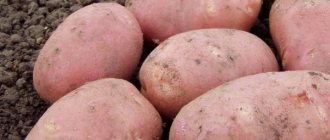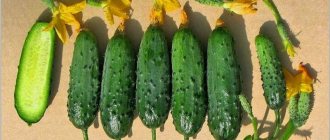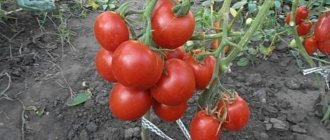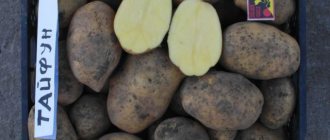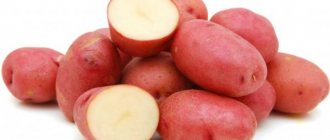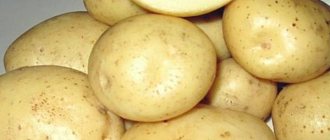Every vegetable grower dreams of growing potatoes on their plot that ripen very early. Arosa makes it possible to enjoy young root vegetables as early as June. The variety is valued for its high yield, drought resistance and unpretentiousness. This is especially important for busy summer residents who, due to circumstances, cannot provide the plant with proper care.
Origin story
The Arosa potato variety got its start in Germany. German breeders bred it in 2009. The originator of the new variety is Uniplanta Saatzucht KG. In 2000, the variety was officially included in the Russian state register. Potatoes began to be actively imported into the country, sold and propagated.
Arosa is suitable for cultivation in the Ural, Caucasus, and Middle Volga regions of the Russian Federation and in Siberia. German potatoes are also popular in Ukraine and Moldova.
Description
Potato Arosa is a universal, early-ripening variety characterized by high yield. On average, 70-75 days pass from emergence to harvest. The first digging can be done 55-60 days after planting.
The potato bush is compact, medium in size, with semi-erect stems. The plant is strewn with small green leaves. The inflorescences are lilac, with a reddish tint. Shoots are uniform.
Arosa tubers have a round, slightly elongated shape. The peel is dark pink with a reddish tint. The surface is smooth, with a slight roughness in places. There are small eyes on the surface of the potato. The pulp is dark yellow and crumbles when cooked. Potatoes have excellent taste and commercial qualities.
The mass of the tuber ranges from 70 to 135 grams. On average, you get 15 potatoes from a bush. With proper care, one hectare of plantings can yield 50-70 tons of crops. The root vegetable contains about 12-15% starch. This variety is great for making chips and French fries.
Growing
Tubers are planted in the ground when it warms up well. Sowing begins in the southern regions, in Siberia and in the middle zone - a week or 2 later. So that the variety does not let down the yield, choose a root crop:
- weighing from 55 to 75 grams;
- with eyes on the surface;
- no dents or scratches.
Instructions for using Alatar against the Colorado potato beetleRead
Shoots will appear earlier if the potatoes left for seeds are sprouted in advance. The best place for a garden bed will be the area where:
- spring and beans;
- mustard and cabbage;
- rapeseed and radish.
The soil is fed with manure, dug up without loosening the lumps; insects that live in the ground will freeze in winter.
When the soil warms up, tubers are planted. To do this, a place for a hole is marked every 30 cm, leaving 70 between the rows. Sprouted potatoes are placed in the holes and covered with soil.
Advantages and disadvantages
Arosa has many positive characteristics:
- rapid ripening;
- high productivity;
- excellent taste (4.6 points out of 5);
- tolerates drought well, so this potato variety can be grown without additional artificial irrigation;
- excellent presentation of tubers;
- resistant to nematode, virus U, mosaic and cancer;
- does not lose its taste and external qualities during storage and transportation;
- uniform shoots.
Potatoes of this variety have much fewer disadvantages than advantages. Arosa can be affected by rhizoctonia, silver scab and late blight. Therefore, before sowing, it is necessary to treat the planting material. Bushes can also be attacked by the Colorado potato beetle.
Attention! The variety is susceptible to mineral fertilizers, so it is important not to exceed the recommended dosage of fertilizing.
Reviews from gardeners
Raisa Ivanovna, 50 years old, Nizhny Novgorod region.
I have been cultivating Arosa potatoes for the last five years. I like the vegetable crop for its stable yield, regardless of weather conditions. The tubers taste good and boil quickly. Over the five years of cultivation, the bushes had to be sprayed only against the Colorado potato beetle, but the disease did not appear.
Yaroslav Sergeevich, 49 years old, Kemerovo region.
The Arosa variety is one of the best varieties that I have ever grown in my small garden. Potatoes are unpretentious in care, even if you don’t water them, a large number of tubers will form, the only thing is that they will be smaller than with watering. The vegetable tastes wonderful and looks attractive. Keeping quality is high. I rate the variety at 5 points and 5 possible.
Landing
Arosa is usually planted in May. The earth should warm up to +9-10 degrees. For planting, choose a sunny area with a flat surface. The best predecessors of potatoes are legumes, cabbage, onions, cucumbers and winter rye. This variety is unpretentious, so it can be grown in any soil.
In the fall, the following organic and mineral fertilizers are applied to the selected area (per 1 m2):
- superphosphate – 1 tbsp. l.;
- potassium sulfate – 1 tsp;
- ash – 1 glass;
- humus or compost - 1 bucket.
If the soil is clayey, river sand is added to it. Fertilizers are evenly scattered over the surface of the site and the soil is dug to a depth of 20-25 cm. In the spring, the soil is harrowed again, leveled with a rake and weeds are removed. The procedure saturates the soil with oxygen.
Two weeks before planting, the root crop is taken out of the cellar. Tubers are sorted, damaged and diseased ones are thrown away. The weight of seed potatoes should be between 60-75 grams. The more eyes it has, the better. To germinate, the tubers are placed in a bright room, where the air temperature is maintained at a level of +12 to +15 degrees. When the sprouts reach 3-4 cm, the potatoes are planted.
To prevent diseases, before planting, Arosa tubers are sprayed with Fitosporin, Alirin or a solution of copper sulfate. To increase yield and accelerate the ripening of potatoes, they are treated with growth regulators. Some of the most effective stimulants are Agat 25-K and Cherkaz.
In order for the harvest to be of high quality, each bush must have sufficient feeding area. Arosa tubers are planted to a depth of 8-10 cm with an interval of 35-40 cm. At least 70-75 cm of free space is left between the rows. According to the planting scheme, holes or trenches are dug. Potatoes are planted with sprouts up and sprinkled with soil to a depth of 5-6 cm.
Attention! The rows should be located in the direction from north to south. This way the bushes are better illuminated and warmed up.
Rules for growing the variety
Arosa" can be grown on any type of soil.
Before planting, potatoes are kept in a bright and warm room for germination for about 2 weeks, with the optimal temperature being +12-15 degrees. Before planting, potato tubers are processed to obtain a good harvest and increase the potato’s resistance to adverse factors, and special store-bought or folk remedies can be used for processing. For planting, it is advisable to use medium-sized healthy tubers, since they will contribute to obtaining a high-quality harvest.
On a planting site with peat soil, it is recommended to add river sand, high-quality humus, and compost. If potatoes are planted on clay soil, add a bucket of humus or peat for each square meter. To improve the composition of sandy soil, clay soil, humus, and peat are recommended.
Planting is only possible in heated soil, so its temperature should be about +10 degrees.
It is recommended to plant potatoes according to a 60x35 cm pattern, and the depth of the hole should be 8-10 centimeters. Such planting will contribute to obtaining a rich and high-quality potato harvest.
Care
Caring for potatoes of this variety is easy. It is necessary to regularly clear the area of weeds, as well as loosen, irrigate and fertilize the soil. The ripening period of the crop and the volume of the harvest depend on the quality of care.
Watering and loosening
It is recommended to water Arosa at least three times during the entire growing season. The first irrigation is carried out a month after planting, the second - during the formation of buds, the third - after flowering. In hot and dry weather, the plant is watered more often. Each potato bush should receive at least 3 liters of warm water. Moistening the area is carried out in the evening or before sunrise.
To saturate the soil with oxygen and retain moisture, the soil is regularly loosened. The procedure is carried out after watering, when the soil dries out a little. Loosening helps get rid of weeds.
Attention! Arosa potatoes tolerate heat well even without additional irrigation.
Hilling
Hilling is the process of filling the lower part of the bush with moist soil. After the procedure, the potato roots begin to grow intensively and branch, so more tubers are formed.
During the entire growing season, potatoes of the Arosa variety are hilled 3 times:
- When the height of the shoots reaches 8-10 cm. If frost is expected, the plant must be completely covered with earth.
- During the period of bud formation.
- During flowering. The height of the comb should be about 18-20 cm.
If the bushes stretch out and fall apart, it is recommended to carry out unscheduled hilling. The procedure is performed carefully so as not to damage the tubers.
Important! If there is no rain and the potatoes need hilling, the soil needs to be moistened.
Top dressing
Feeding of potatoes of this variety is carried out in several stages. It is important to strictly observe the proportions, since excess fertilizer can destroy the plant.
During the period of formation and growth of tubers (during budding and flowering), mineral and complex fertilizers with a high content of potassium and phosphorus are added to the soil. To prepare the nutritional composition, you need to mix 15 g of potassium sulfate and 15 g of superphosphate. The mixture is dissolved in 10 liters of water and watered over the potato plantings. Consumption – 1 liter of solution per 1 m2.
20 days before digging up the tubers, Arosa bushes are watered with complex mineral-organic fertilizer. To do this, 0.25 liters of manure and 20 g of superphosphate are dissolved in a bucket of water. Thanks to this feeding, root crops will receive a supply of nutrients necessary for long-term storage.
Photo
Potato plantations of the Arosa variety are distinguished by beautifully formed bushes with erect stems. The shoots are uniform and dense. The leaves are medium and large, dark green in color with smooth, slightly wavy edges.
The inflorescences are dense, red-violet in color. Arosa is recognized as one of the earliest and highest-yielding potato varieties. Growing these potatoes does not require much effort. Activities such as additional watering, hilling, and mulching are not required, but can be beneficial.
With additional fertilizer, the yield increases significantly, but even in the absence of fertilizing, potatoes please with their high quantitative indicators. With minimal effort, you can get the maximum yield of beautiful, tasty and long-lasting potatoes, which are quite suitable for running a business.
Below in the table you will find links to articles devoted to potato varieties that ripen at different times:
| Mid-late | Mid-early | Late ripening |
| Aurora | Black Prince | Nikulinsky |
| belongings | Nevsky | Asterix |
| Courage | Dark-skinned girl | Cardinal |
| Rowanushka | Lord of the Expanses | Kiwi |
| Blue | Ramos | Slav |
| Zhuravinka | Taisiya | Rocco |
| Lasunok | Lapot | Ivan da Marya |
| Sorcerer | Caprice | Picasso |
Wisteria at home - how to grow || Caring for wisteria at home
Diseases and pests
Arosa is characterized by high resistance to mosaic, nematode, Alternaria, Fusarium, potato blight and viral infections. This potato variety is susceptible to infection with rhizoctonia, silver scab, late blight of tops and tubers.
The photo shows a tuber affected by silver scab.
From the table you can find out how each of these diseases manifests itself and how to deal with them.
| Disease | Signs of infection | Control measures |
| Late blight | Brown spots form on the leaves, then a gray coating appears. The bush begins to dry out. | Spraying with Kurzat, Ridomil or Acrobat. At the first signs of disease, potatoes can be treated with Fitosporin. |
| Silver scab | Brown spots are found on the tubers, which over time acquire a silver tint. The peel dries and wrinkles. | After harvesting, the potatoes are sprayed with the agrochemical Maxim. And before planting, they are treated with Celeste Top or Quadris. |
| Rhizoctoniosis (black scab) | Dark spots appear on the tubers, looking like pieces of dirt. They rot during storage. Brown spots and sores form on sprouts and roots. | Seed potatoes are sprayed with the agrochemical Maxim, and before planting they are treated with Tecto, TMTD or Titusim. |
To prevent diseases, you need to observe crop rotation, plant healthy seeds and timely harvest.
Of the pests, Arosa can be attacked by the Colorado potato beetle and mole cricket. They get rid of them with the help of drugs such as Bicola, Fascorda and Kinmiks.
Important! After harvesting, the tops of infected potatoes should be burned.
Potato Arosa - an early drought-resistant variety
One of the earliest varieties, the Arosa potato, was bred and registered in Germany in 2009. The particular value of the variety is its high yield and resistance to drought. Arosa can be grown without the use of artificial irrigation.
- Description
- Agrotechnical techniques
- Reviews from gardeners
Description
The Arosa bush is beautifully formed, with semi-erect stems. Potato tubers are round, slightly elongated, the eyes are shallow. The color of potato flowers is red-violet, and the potatoes themselves have a bright red-pink color.
Its ripening period is only 70-75 days. The number of marketable tubers in a bush can reach 15-16 pieces, and the weight of each potato can be from 70 to 150 grams. Naturally, the Arosa variety is considered one of the highest-yielding; you can get up to 50 tons of potatoes per hectare, and with good plant nutrition, up to 70 tons!
- The commercial yield of tubers is very high, can reach from 94 to 96%.
- This variety can be successfully grown on any type of soil.
- Arosa is extremely responsive to increased doses of mineral fertilizers.
- Since the variety is drought-resistant, it can be cultivated even in the southernmost regions.
Potatoes have fairly good shelf life; their dormant period lasts until the end of April. Sprouted and planted potatoes produce quick, friendly shoots.
Experts warn that treating Arosa against silver scab and rhizoctonia is mandatory! Plants have immune resistance to diseases such as:
- nematode
- cancer
- striped and wrinkled mosaic
- virus U
Arosa tubers have light yellow flesh, medium boilability and are suitable for both regular table use and for making French fries. Arosa is classified as a universal variety. The high starch content (12 to 14%) gives potatoes excellent taste.
Agrotechnical techniques
Features of agricultural technology include the removal of tops recommended by potato growers approximately two weeks before the start of harvesting. Yes, yes, that's not a typo. Although we are accustomed to pulling the crop out of the ground by the tops, it is precisely its pruning before harvesting that will protect the tubers from late blight.
One of the gardening tricks for early potato varieties is to use special organic bedding. But for long-term cultivation on one area of Arosa, the method of overseeding spring green manure after harvesting the tubers has proven well. Overseeding rapeseed, mustard and oilseed radish improves the soil environment and increases the productivity of Arosa.
Let's find out why? First of all, they suppress the development of late blight due to the active processing of iron. It has been proven that late blight develops better in soil enriched with iron. Wonderful observation, right?
Cabbage green manures are not afraid of poor and heavy soils, they successfully condense moisture from the air, and therefore remarkably “ennoble” the soil in terms of its moisture capacity. Their root system penetrates to a sufficient depth and brings nutrients that are inaccessible to potatoes to the surface. They reduce soil acidity by enriching it with calcium. They grow a lot of green mass, which, when decomposed, provides additional carbon that improves the nutrition of Arosa potatoes.
And the most useful quality is sanitary. Their phytoncides successfully suppress fungal parasites, but at the same time attract earthworms. Worms, passing the remains of vegetation with the soil through themselves, destroy pathogenic flora. Due to the roots of cabbage green manure and the work of worms, the soil structure improves, so the yield of Arosa increases significantly.
They should be sowed after harvesting Arosa, in August. It is better not to dig up the soil either before sowing or in late autumn. Otherwise, you will dissect the soil workers - earthworms. If autumn has dragged on and the crops have begun to bloom and produce ovaries, it is better to protect yourself from self-seeding and cut off the succulent fertilizer, leaving it right on the garden bed. If flowering does not occur, let all the regrown plants go under the snow just like that.
Harvesting
The peculiarity of this variety is that 15 days before harvesting, the potato tops are cut down. This reduces the likelihood of the plant becoming infected with late blight. At the same time, stop watering.
For food, potatoes can be dug up in late June - early July, when the plant begins to bloom. Harvesting is completed at the end of July. The tubers are thoroughly dried, sorted and placed in boxes with small holes. The root crop is stored at a temperature from +2 to +4 degrees.


